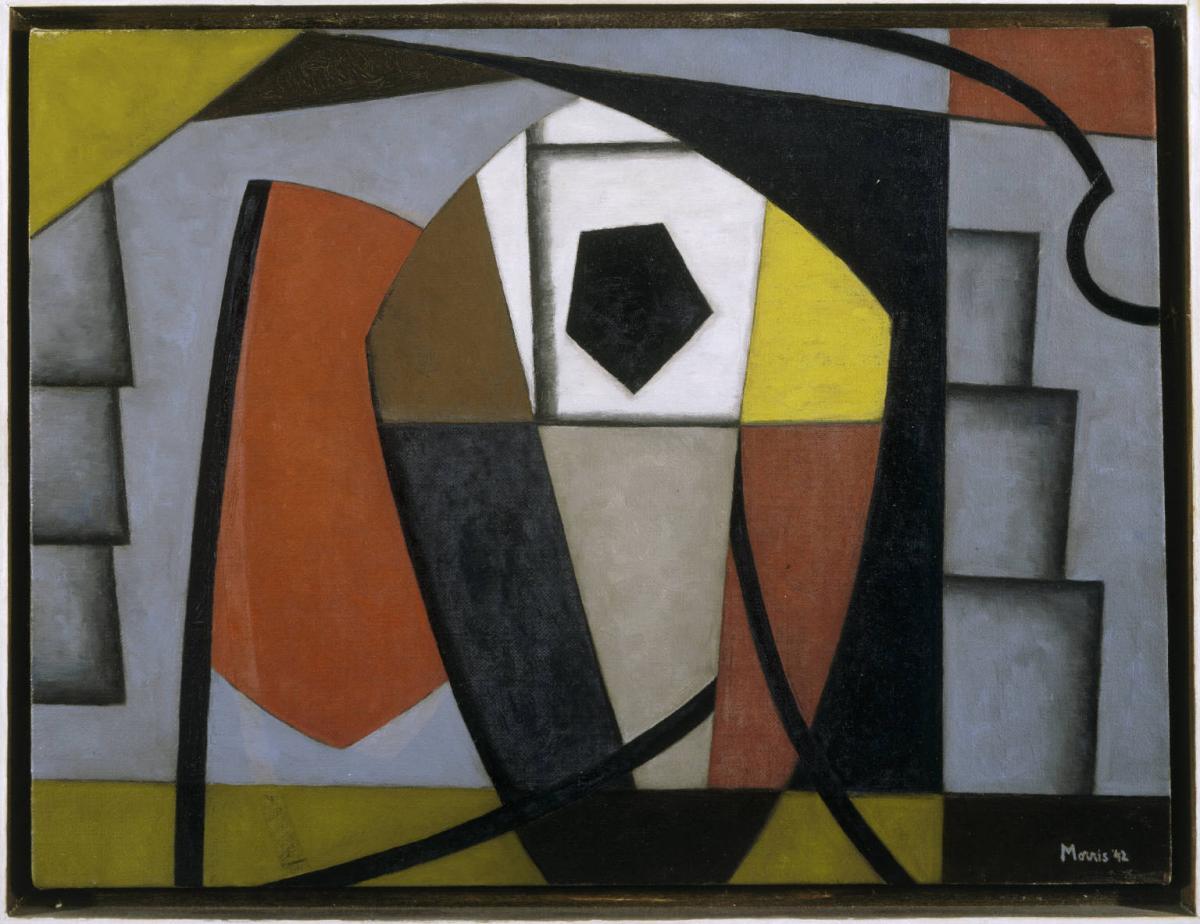Heraldic Abstraction
George L.K. Morris ( 1942 )

Both a collector of European modern art and a founding member in 1936 of American Abstract Artists, George L.K. Morris was convinced of the need for an “Americanized abstract art.” Morris studied in Paris in the early 1930s with the French Cubist painters Fernand Léger and Amédee Ozenfant, where he visited the studios of Picasso, Braque, Piet Mondrian, and Jean Arp. From Léger, Morris learned the importance of an intellectual approach to cubism. Morris’s paintings are distinct, not only for his compression of flat shapes, color planes, and linear elements into a formal unit, but also for references in them to Native American art, an important influence on him as he sought to find his unique American voice.
Morris painted Heraldic Abstraction in 1942. The painting is of flat planes of red, yellow, and white, dominated by gray, and intersected by black lines, creating abstract forms. These simplified cubist forms are reminiscent of Léger and Juan Gris’s earlier abstract paintings, which too focus on converging planes and lines. By eliminating subject matter, Morris puts the emphasis of the painting on his color palette. Morris once said that “color alone is recorded direct upon the emotions.” He was a firm believer that color represents emotion and feeling and can convey the true meaning of a painting. Though Morris had strong opinions and theories about modern and abstract art, his own work was experimental and “surprisingly free of doctrinaire consistency.”